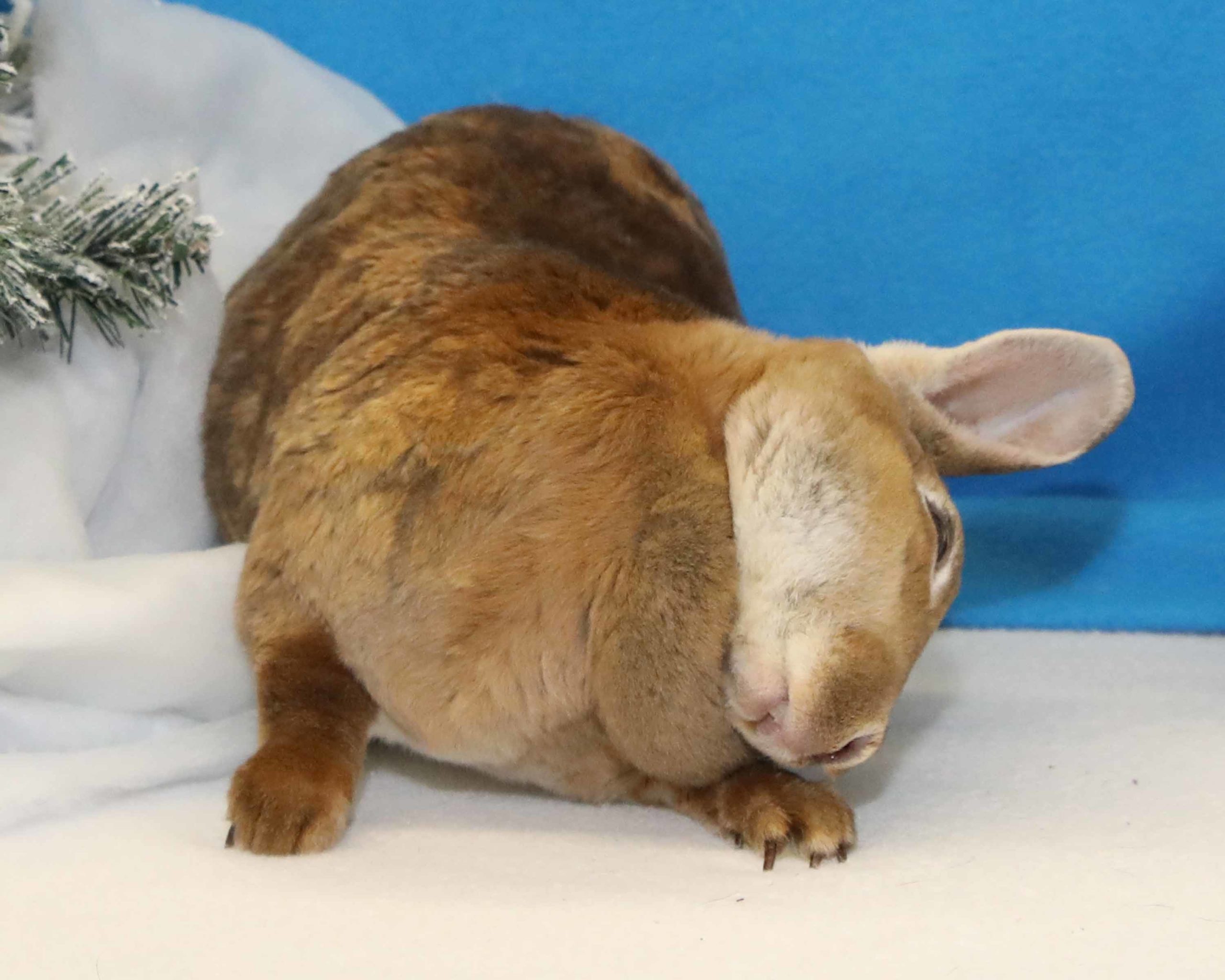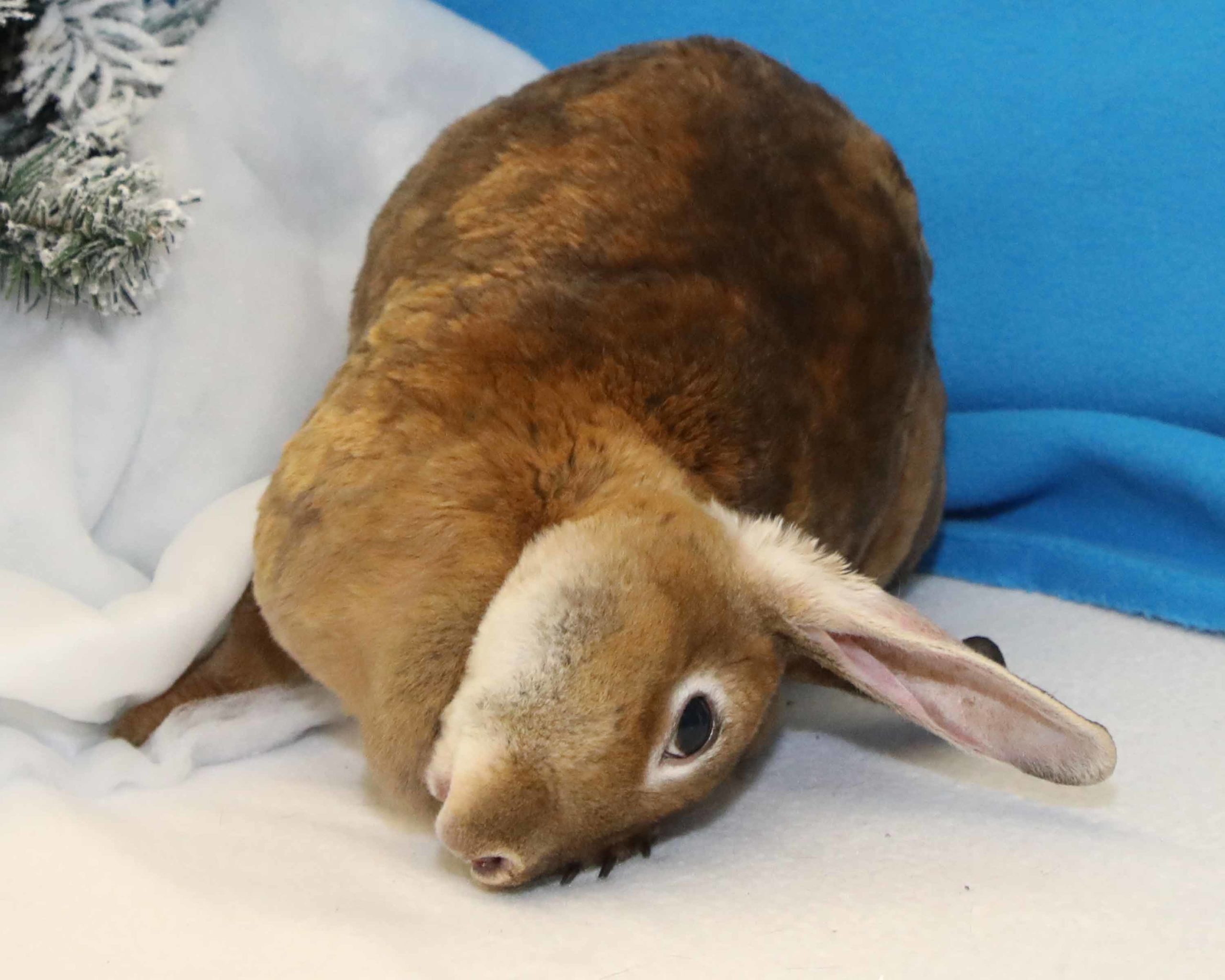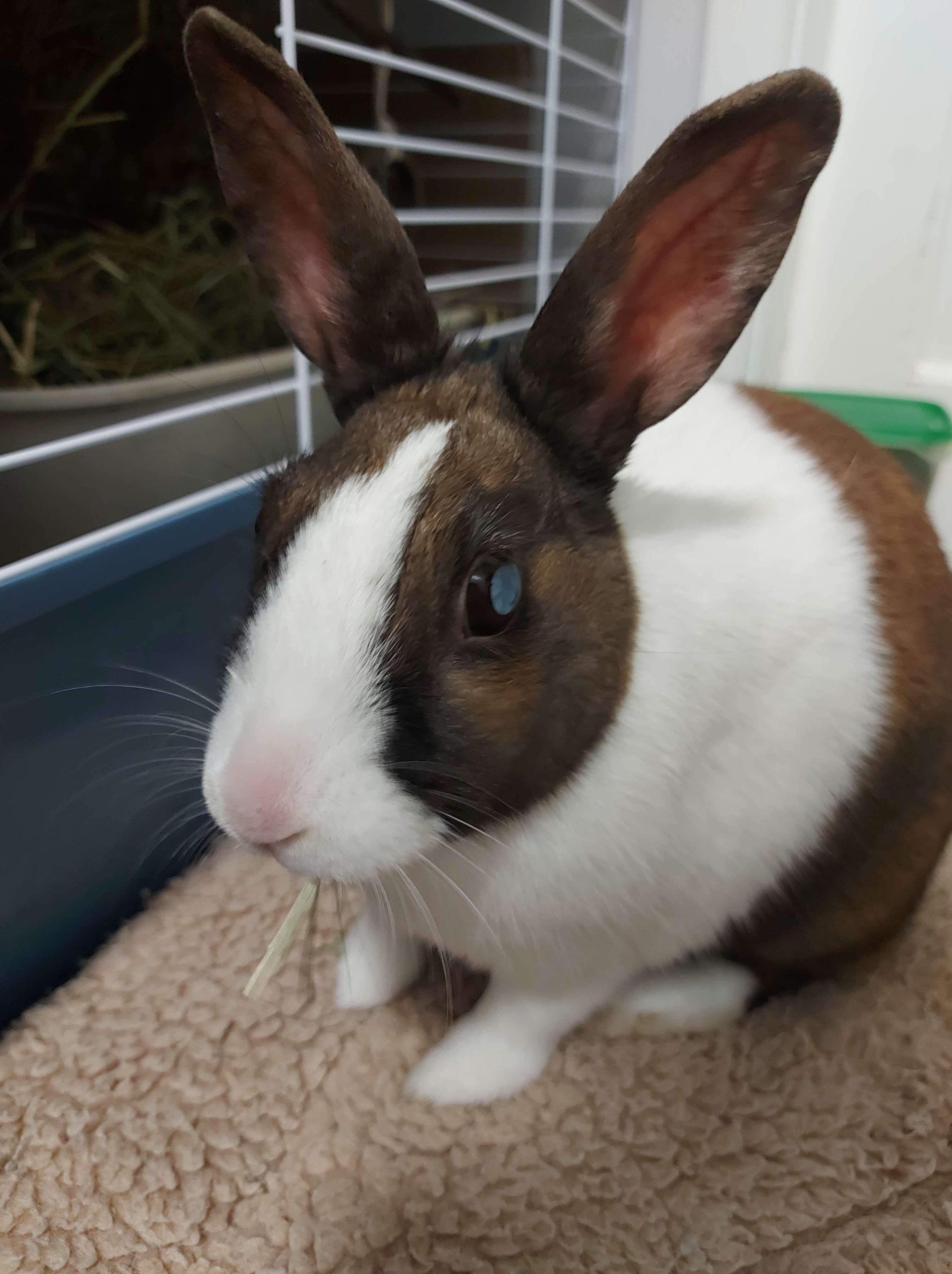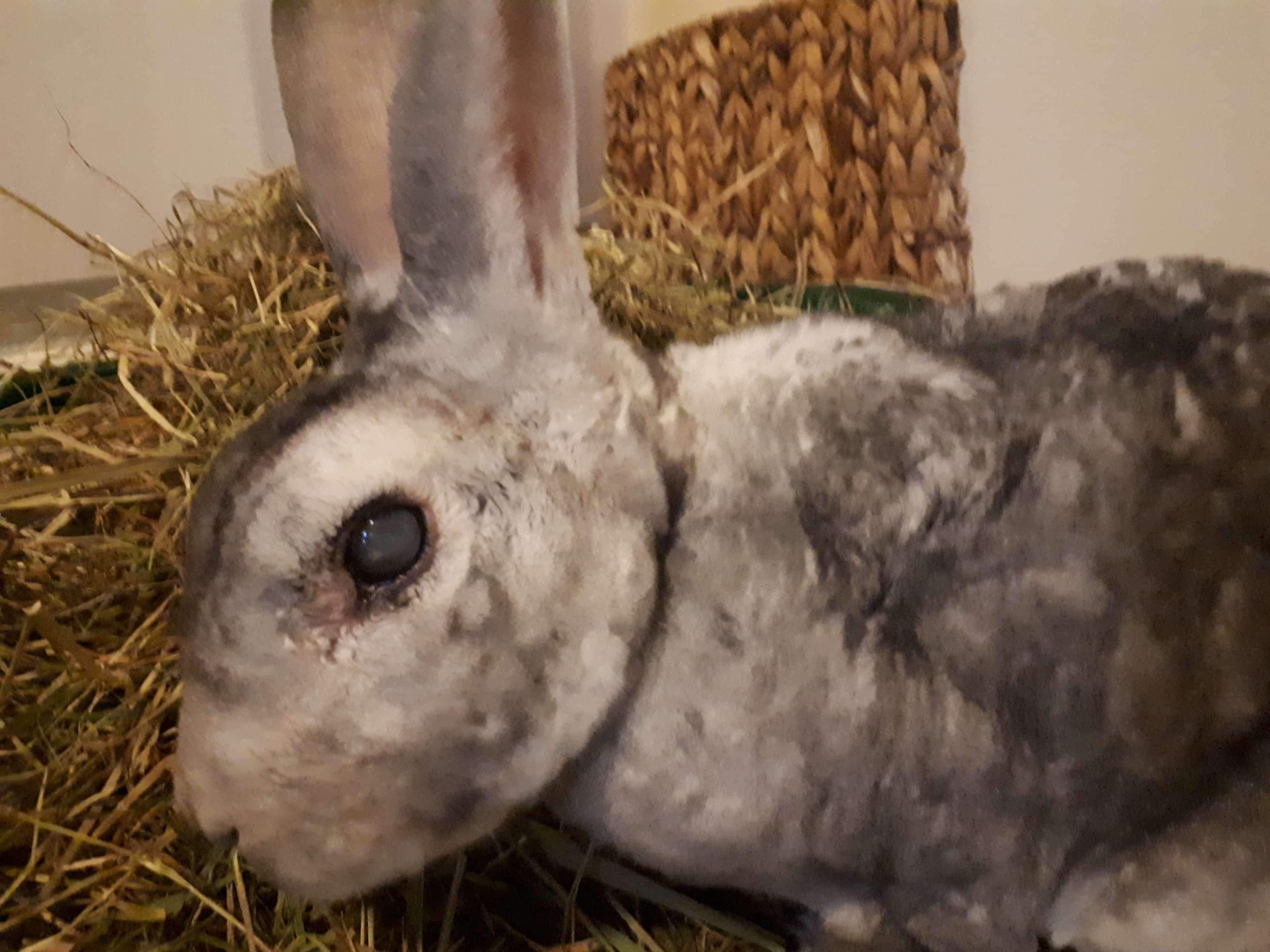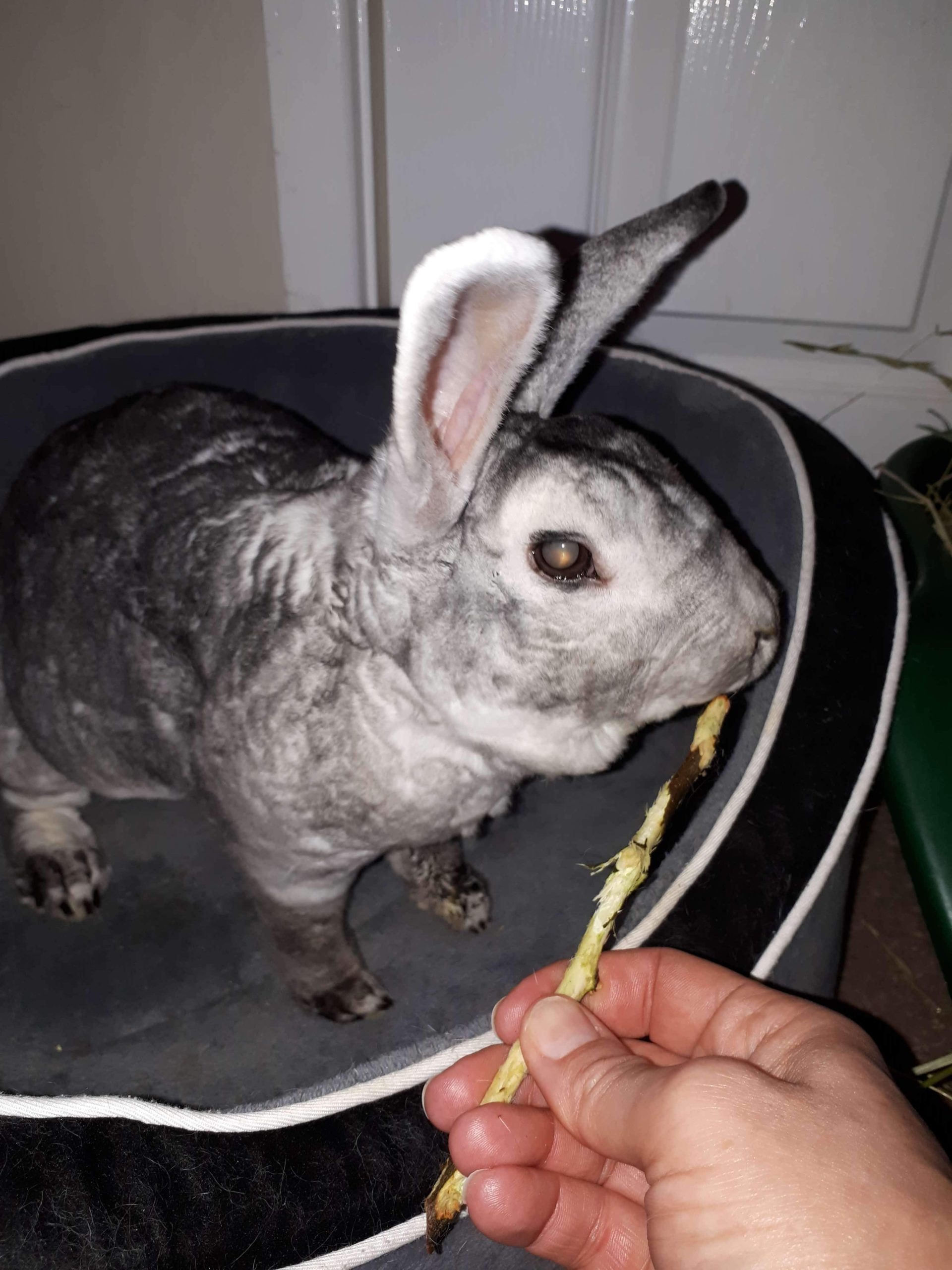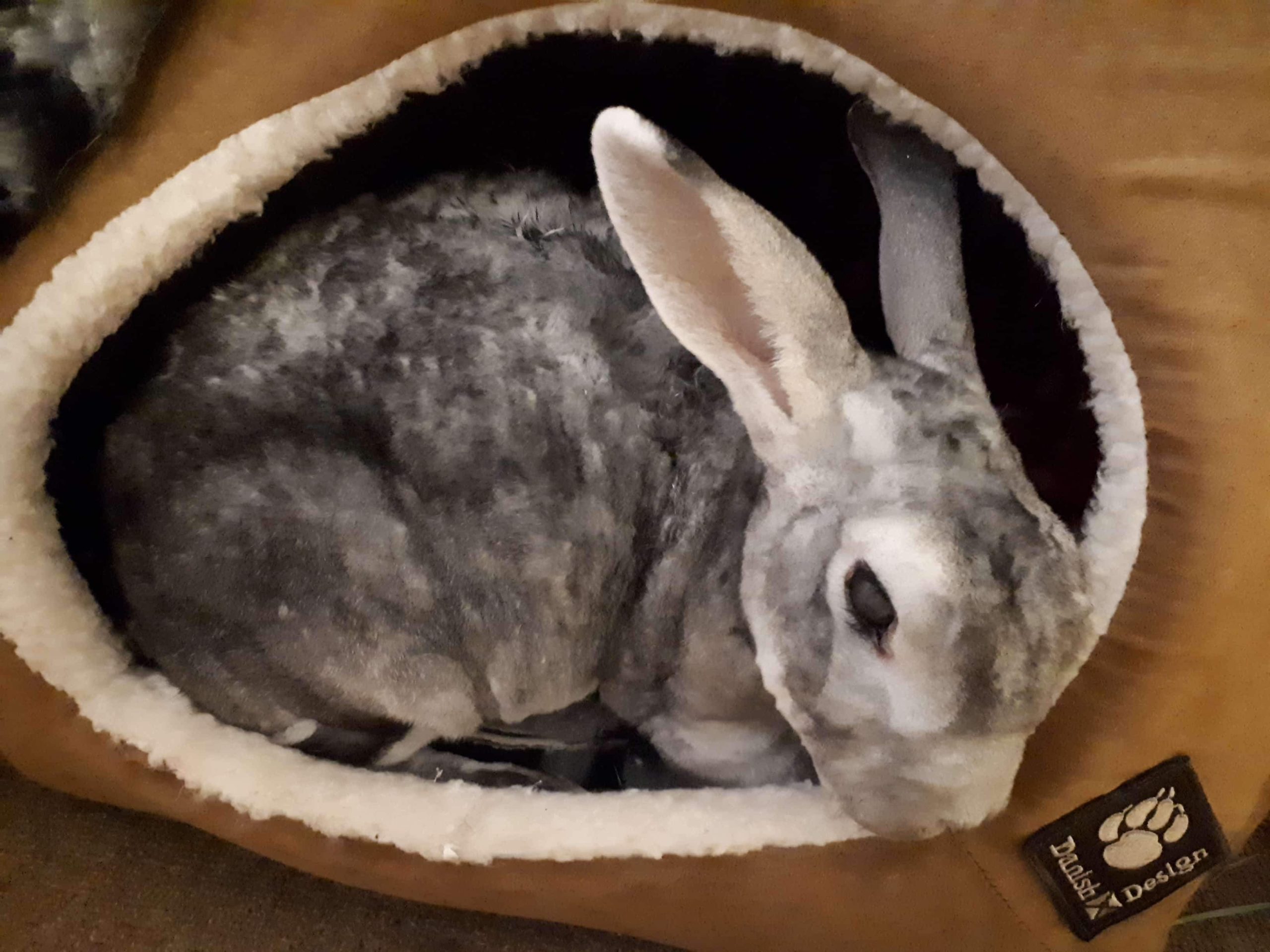Is your rabbit’s head tilted? Is he/she falling over and having trouble walking? Don’t panic. This can be caused by a lot of things, but one of the most common causes is E.cuniculi. If I had known what I know now with my first rabbit, I might have been able to save him. Here’s my true story.
My first bun was Basil. While I would always choose to rescue a rabbit now, I fell in love with him at the Pasco County (Florida) Fair. Wasn’t he adorable?
SAFETY NOTES:
- Do not flip a rabbit on their back. They can panic and severely injure themselves trying to get back in a normal position.
- Wire-bottom cages are a big no-no. Your rabbits can get sore hocks.
- That cage is not big enough for three buns. Each rabbit needs one exercise pen (8 square feet) of enclosure space.
- One litter box is not enough for three buns.
I didn't know any of this back then. I do now.
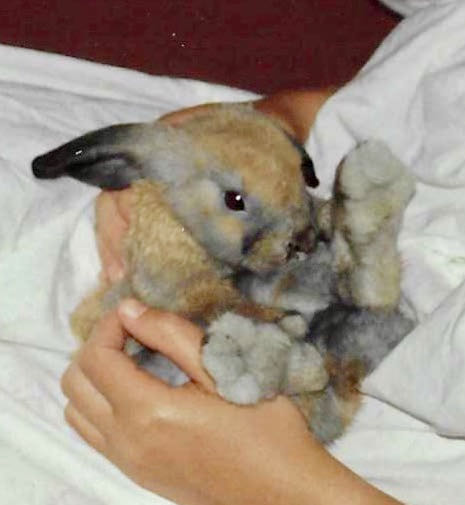
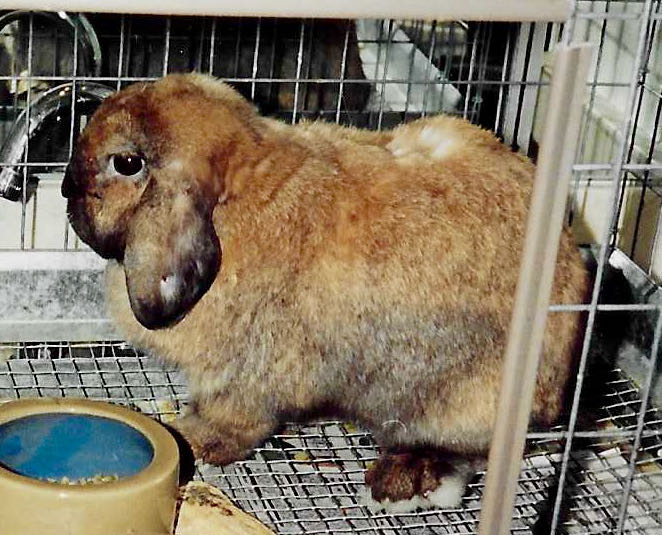
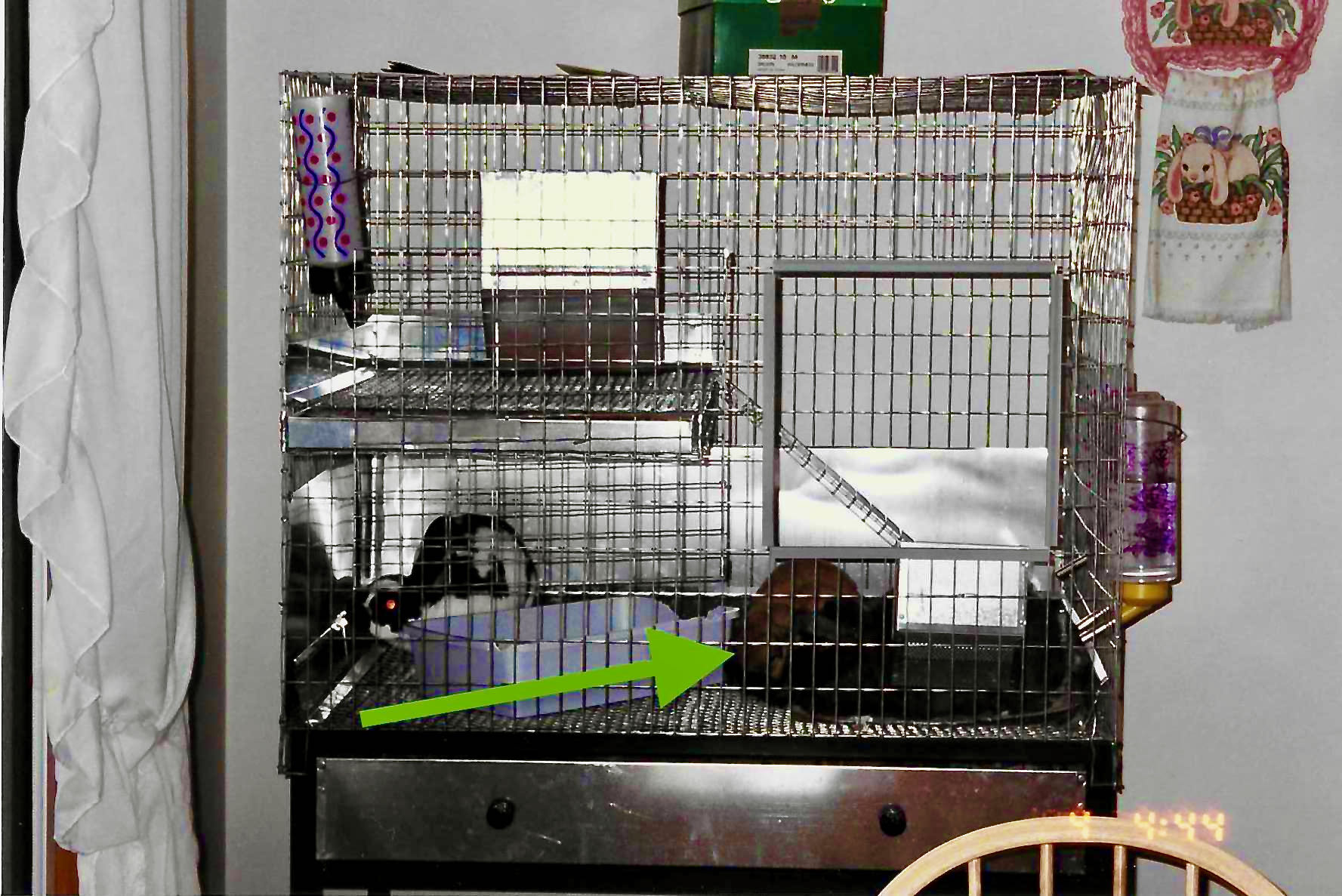
In 1999, I was in Alabama for military training for three weeks. As Basil was an experienced traveler, he accompanied my then-husband, Billy, on a trip to Savannah for his medical school boards. Unfortunately, Billy called to tell me something was terribly wrong with Basil. Basil's head was tilted about 70 degrees; otherwise, everything else seemed normal. He was eating, drinking, and using the bathroom as usual. Billy took Basil to the animal ER. The vet diagnosed Basil with an unrecoverable stroke and stated he should be euthanized. Fortunately, it was the weekend, and I drove from Alabama to Savannah to say good-bye to Basil as I trusted the vet’s diagnosis.
In the 1990s, I didn’t know anyone else with a pet rabbit. Additionally, there was very little information about rabbit care, and the internet was just getting started. Fortunately, these days, a lot more is known about rabbit care and we have the power of the internet to look up information in an instant. If you do an internet search for “my rabbit’s head is tilted,” there’s plenty of information available. Also, I’m grateful to have our exotic veterinarian and his extensive network to make sure my buns get the best care.
Since that time, I’ve learned a lot more about rabbits as a volunteer at Rocky Mountain House Rabbit Society and a certified instructor for teaching rabbit health care. It makes me sad realize that Basil probably had E.cuniculi and quite possibly have been treated and recovered.
This article is not meant as a substitute for medical care for your bunny bun buns. If you suspect anything is wrong with your loveable lagomorph, get them to your trusted exotic vet right away.
Cassie, a rescued head-tilt bunny. Her head-tilt was caused by inner ear damage.
📷: The Rabbit Haven/Maurice Liang
What Is It?
E.cuniculi (EC) is a protozoal infection and is considered parasitic. The parasites enter the body two ways:
- Respiratory system
- Digestive system
EC is transmitted to other rabbits exposed to the urine of an infected rabbit. Keep in mind lagomorphs hop in “used” bedding, then wash their faces with their paws and forearms. So toys, blankies, and everything in their living area can carry the protozoa. That’s how rabbits get E.cuniculi.
The protozoa move through the bloodstream and into the organs, including the kidneys and brain, from the digestive tract. The disease is most infectious when the protozoa are in the kidneys. There is usually kidney scarring and damage at this point. Any neurological damage may stem from protozoa in the brain. The damage could also be a side-effect of the rabbit's immune response or a combination of both. A bunny’s eyes are very close to the brain. If the infection migrates to the eyes, it can result in sudden eye inflammation and, eventually, cataracts.
The time from ingestion to external E.cuniculi symptoms showing up can be a month or more.
Is It Common?
It sure is. EC is common and international. It has been estimated that up to 80% of domestic rabbits are infected, but only a small amount actually show symptoms. Rabbits displaying signs are contagious for a few days to a few weeks.
Why do these poor rabbits end up with problems? Nobody has been able to pin it down precisely. Still, certainly any "compromised" animal will have a greater chance of trouble. Healthy, active young adult animals are less likely to show symptoms than elder buns or rabbits with other health issues. The infection may stay dormant for a bun's entire life, or it may show clinical signs at random.

What are the Symptoms?
Many of us have heard stories similar to Basil’s. "My rabbit had some sniffles, and when I got home from work, her back legs weren't working," or "My rabbit wasn't acting right, and when I woke up, his neck was turned funny, and he couldn't walk right."
📷: SNORS
Rabbit with slight head tilt and bilateral cateracts caused by EC.
Most prevalent signs of EC:
- Hind leg weakness
- Head tilt to one side
- Eyes moving side to side or up and down (nystagmus)
- Rabbit is spinning or rolling (similar to being dizzy)
- Unexplained seizures, cataracts, hearing loss, or changes in behavior
- Drinking and peeing more than usual (from kidney damage caused by EC)
Please keep in mind that EC symptoms can also be symptoms of other conditions. As an example, head tilt is caused by an ear imbalance, which throws off a rabbit's balance. They tilt their head to compensate. Just because your rabbit has head tilt, doesn’t automatically mean he/she has EC. Head tilt can also be caused by other factors like an inner ear infection or a damaged inner ear. Abigail’s Dad even wrote a blog about her encounter with head tilt due to an inner ear infection.

📷: Maurice Liang & Abigail
It’s best to get your rabbit diagnosed and treated by a rabbit savy vet as soon as possible.
How Is It Diagnosed?
E.cuniculi is diagnosed via a blood test, only available from your exotic vet. Like other infections, sometimes the blood test will show a negative result. If that happens, your vet may treat your bun based upon their symptoms.
Treatment
Depending on your rabbit’s symptoms, your vet will treat the infection AND the other symptoms. EC requires a 28-day course of an anti-parasite drug. For example, your vet may prescribe eye medication for inflammation or cataracts and anti-vertigo medication for dizziness. You might have to modify their living space to increase your rabbit's comfort as they recover. Additionally, other changes might be necessary if they are paralyzed or have rear limb weakness.
Patience is vital during your bun bun's recovery. It may take more than one course of the anti-parasite medication to resolve E.cuniculi.
Can Humans Catch It?

They can. If your immune system is compromised, you might be more susceptible to EC. If you have an auto-immune disorder, receive chemotherapy treatment, etc., check with your exotic vet and primary care physician.
Excellent personal hygiene is always helpful. At a minimum, make sure to wash your hands after handling hay, used bedding, or dirty litter boxes.
So that’s the scoop on EC. We sure hope your babies don’t catch it, but with quick veterinary intervention, head tilt is treatable and recoverable. Have any of your rabbits had it? Do you know how your rabbits got E.cuniculi? How did you deal? We’d love to hear your stories. Please comment on our socials or email us at hoomans@smallpetselect.com.
DISCLAIMER: These links are being provided as a convenience and for informational purposes only; they do not constitute an endorsement or an approval by Small Pet Select of any of the products, services or opinions of the corporation or organization or individual.
Want to keep your rabbit healthy? Check these out! ⬇️⬇️⬇️
Simple Health Checks for Animals You Can Do At Home
Learn About the Bunny Food to Start the Year Off on the Right Paw




